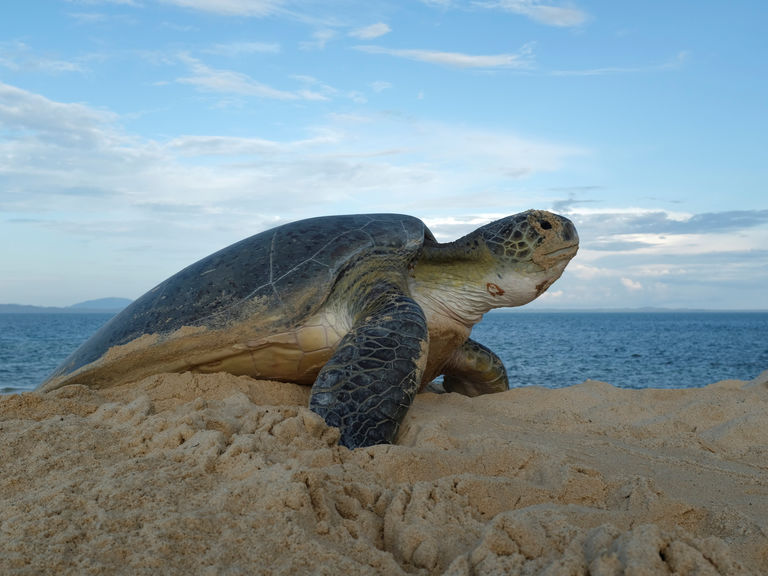Project Detail: Save Ocean Turtle
Contest:
Swiss Storytelling Photo Grant 9th
Brand:
LuganoPhotoDays
Author:
Carlos Ramiro
Project Info
Save Ocean Turtle
Conservation and Protection Project of the Marine Turtle in Sarawak. Borneo. Malaysia.
Save Ocean Turtle is a wildlife and conservation photography project, carried out in Talang Satang National Park, in the state of Sarawak, Borneo, Malaysia. Talang Satang was established with the primary aim of conserving Sarawak marine turtle population. The park comprises the coastline and sea surrounding four islands of the southwest coast of Sarawak.
Talang Satang National Park was gazetted in 1999, and covers a total area of approximately 19.400 hectares, and comprises all lands below the high tide marks on the respective islands, and the surrounding seas for a radius of 4.8 km from the highest point on each island. Beautiful shallow reef areas surround all the " four islands ". The reefs generally consist of several species of hard coral and colonies of soft coral. They provide shelter and resting grounds for sea turtles, and are also important fish breeding areas.
Pulau Talang Besar is the island where the largest number of turtles come to lay the eggs, and it is the island where this photography project was made. Located 30 minutes offshore from Sematan in southwest Sarawak. This small island serve as sanctuarie for Green and Hawksbill turtles. Over 90 per cent of turtle landing are from Green turtles { Chelonia Mydas }. The island are Sarawak most important turtle conservation site and are part of the Talang Satang National Park.
Sarawak is a pioneer of turtle conservation with Talang Besar being the first site in the world to be the focus of turtle research and management activities. The now common turtle conservation strategies of tagging adult turtles and relocating eggs to hatcheries were first tried out on the small island of Talang Besar. In 1953 a new method of tagging marine turtles was pioneered in the Talang Talang islands when American zoologist John R. Hendrickson came up with the idea of using self-piercing, self clinching cow ear tags. Prior to this it was common for researchers to drill a hole in the turtle and attach a tag with wire. These tags were not very durable and often subject to corrosion. Conservation work continues today. Park rangers monitor the beaches, record turtles landings, nests, number of eggs and hatchlings.
Whilst turtles land on the islands beaches throughout the year, the main turtle nesting season is from April to October. June, July and August are the busiest months with 20 or more turtle landings per night. 2.000-2.500 nests and 150.000-200.000 eggs are recorded on Pulau Talang Besar each year. On average 65 per cent eggs hatch.
Marine turtles are amongst the worlds longest-lived creatures, which many reaching a lifespan of more than 100 years. Graceful swimmers that spend most of their time underwater, they have survived almost unchanged since the Triassic period, some 200 million years ago. However the breeding habits that have served them so well for so long are now contributing to their extinction.
Marine turtles mature slowly, only starting to breed between 30 and 50 years of age, and once they commence breeding, females usually only produce eggs once every four or five years. They do not lay their eggs on just any beach, but migrate back to their beach of birth, sometimes across distances of more than 3.000 km. How they find their way back to that particular beach is one of natures great unsolved mysteries. It is also a major factor in the decline of turtle population, because as beaches around the world are developed for various purposes, the turtles are unable to move to undisturbed nesting sites. Other factors that contribute to turtle mortality are deliberate poaching of turtles for meat and tortoiseshell; uncontrolled collecting of turtle eggs { a sea turtle egg is sold in the illegal trade for 3 Malaysian Ringgit, about US$ 0.65 } ; entrapment in fishing nets; destruction of feeding grounds such coral reefs or sea grass beds; and ingestion of plastic bags which some species mistake for jellyfish, part of their natural diet. Even under perfect conditions, survival rates are very low. A female turtle may lay as many as 10.000 eggs in her lifetime, but because of nesting losses due to natural land predators { on the island of Taland Satang only predator on land is the Water Monitor Lizard { Varanus Salvator }, which daily comes down to the beach from the edge of the jungle where they live, to detect turtle nests with its excellent olfactory tongue, and dig to eat the eggs } , and predation by fish once they reach the sea, as few as 10 hatchling will survive to reach maturity.
The sea turtle conservation programme has been carefully planned to involved local communities. The traditional rights and practices of the local landowners, villagers, and fishermen are recognized, and Sarawak Forestry Corporation { entity under the Sarawak government that manages all national park and protected areas in the state of Sarawak } works in close co-operation with them to ensure sustainable usage of the resources they are entitled to.
International status of Chelonia Mydas { green sea turtle } are listed as Endangered by IUCN { International Union for Conservation of Nature } and CITES { Convention of International Trade in Endangered Species of Wild Fauna and Flora }.


















